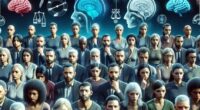Exploring the Intellectual Property Challenges of Generative AI
As artificial intelligence (AI) continues to evolve, it brings to the forefront numerous debates around intellectual property (IP) rights and regulations. The burgeoning field of generative AI, encompassing systems capable of creating new content such as text, images, audio, and video, introduces complex questions regarding the ownership and copyright of AI-generated outputs. This article delves into the critical IP issues concerning generative AI technologies, drawing insights from various jurisdictions including Australia, Canada, China, the EU, France, Germany, Hong Kong, The Netherlands, Singapore, South Africa, the UK, and the US.
Understanding Generative AI
Generative AI refers to advanced algorithms that produce entirely new content based on the data they have been trained on. Examples of such systems include ChatGPT by OpenAI, Google’s Bard, and DAL-E. Unlike conventional AI, generative models can generate text, graphics, audio, and more, pushing the boundaries of automated content creation.
The IP Landscape for Generative AI Systems
The intellectual property implications of generative AI are as varied as the technologies themselves. To dissect these complexities, it’s essential to understand the roles of different stakeholders in the generative AI ecosystem, as influenced by the terminology and guidelines of the EU’s AI Act:
- Providers: The entities, such as OpenAI with ChatGPT, that develop these generative AI systems.
- Deployers: Companies that integrate these AI technologies into their operations or product offerings.
- Users: End-users, including both employees and customers, who interact with the AI by inputting prompts or data.
This distinction helps in identifying who holds the copyright and related IP rights at various stages of interaction with generative AI tools. Moreover, this classification highlights the diverse ways in which generative AI systems are deployed, further complicating the landscape of IP considerations.
Deployment Considerations
Different deployment scenarios present unique challenges and considerations. From incorporating generative AI in content creation processes within businesses to embedding AI functionalities into consumer products, each use case triggers specific IP concerns. For instance, the role of the deployer becomes crucial in negotiating licensing agreements, copyright compliance, and potential liabilities.
Global Perspectives on Generative AI and IP Rights
Given the global reach of generative AI technologies, understanding the IP regulations across different jurisdictions is essential. The legal stance on AI-generated content varies significantly from one country to another, reflecting diverse cultural, legal, and economic considerations. For example, while some regions might lean towards offering copyright protection to AI-generated works, others could deny such claims, arguing that human authorship is a prerequisite for copyright eligibility.
Key Challenges and Forward Path
The rapid advancement of generative AI raises several pressing issues for IP rights management. One of the most contentious debates revolves around the ownership of AI-generated content. With AI systems increasingly capable of producing complex and creative outputs, the traditional boundaries of copyright law are being tested. This necessitates a dynamic and forward-thinking approach to IP legislation that can accommodate the nuances of AI-driven creativity.
Moreover, the collaboration between AI developers, deployers, and users calls for transparent and fair licensing arrangements. These agreements must balance the interests of all parties involved while fostering an environment that encourages innovation and creativity.
Conclusion
The intersection of generative AI and intellectual property rights presents a challenging yet exciting frontier for legal scholars, technology developers, and policy-makers. As these AI systems continue to evolve, so too will the frameworks designed to manage their intellectual outputs. Striking the right balance between protecting IP rights and encouraging innovation will be pivotal in shaping the future of generative AI technology.
In an era where technology constantly outpaces legislation, a collective effort from all stakeholders is essential to navigate the complexities of IP rights in the age of AI. By fostering dialogue and collaboration, it’s possible to develop legal and regulatory frameworks that not only protect intellectual property but also promote the growth and development of generative AI technologies.










